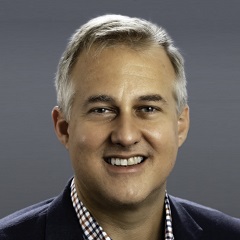Children, Young Adults Must Be Educated Now to Avoid Liver Cancer
Early detection of liver disease and healthy diets important part of prevention

DAYTON, Ohio (January 25, 2019) – Liver cancer is on the rise among older adults, underscoring the need for education among children and young adults regarding the risks for liver disease, also known as hepatocellular carcinoma (HCC).
It’s a message that one local oncologist wishes more individuals would take seriously, and one that is backed by years of statistics. Since 1980, the incidence of liver cancer has tripled with men receiving the diagnosis three times more than women, according to the American Society of Clinical Oncology (ASCO).
“Liver cancer refers to a tumor that begins inside the liver itself,” said James Ouellette, DO, a surgical oncologist and liver surgeon with Premier Surgical Oncology. “Sometimes patients can be confused about tumors that metastasize to the liver from another place in the body. They can often think of the tumor in their liver as liver cancer, but it may have actually started in another organ.”
According to the ASCO, more than 42,000 adults were expected to be diagnosed with primary liver cancer in 2018. A third of the individuals who are diagnosed at an early stage will live more than five years. Those whose cancer can be treated through surgery have the highest chance for cure regardless of the state of disease, the ASCO reported.
“There are two potentially curative treatments for liver cancer,” said Dr. Ouellette, who is a certified physician with MD Anderson Cancer Network and practices with Premier Physician Network. “One is a resection or removal of the tumor through surgery and the other is through a liver transplant.”
However, liver transplants can be difficult. While more livers are available from donors, most people in need of transplant in the United States have access to a limited number of organs. Patients must be placed on a list and meet specific qualifications. Unfortunately, many people don’t qualify for either surgery or transplants and instead receive treatment through other palliative therapies.
Still, there is hope despite the statistics. It appears that rates of liver cancer in young adults are beginning to decrease, according to the ASCO. Dr. Ouellette said it is imperative that individuals understand what places them at risk for developing liver cancer to reverse the effects of certain factors and to allow for early detection of the disease.
Get tested for Hepatitis C – Hepatitis C is an infection that leads to liver inflammation and liver damage. Know if you are at risk for developing the illness and, if so, get tested. Hepatitis C can be transmitted through IV drugs, needles, sexual contact, blood transfusions prior to 1990, and travel to foreign countries. This is especially timely because of the opioid crisis in the United States and the resurgence of some IV drug use.
Develop a healthy lifestyle – Cut out all processed foods from your diet and replace them with fresh fruits and vegetables, and lean meats. Take a serious look at your weight and determine if your body mass index (BMI) is within a healthy range. Obesity is a major contributor to health issues that lead to non-alcoholic fatty liver disease. Fatty liver disease represents the largest increasing cause of cirrhosis, leading to liver cancer.
“The real challenge is that many of the contributors to liver cancer are life-long habits that can’t be quickly fixed or cured with a pill,” Dr. Ouellette said. “Things like cirrhosis develop over many years. We need to be teaching our children and young adults to live healthier now.”
Contact Us
Discover more about Premier Health and join us in building healthier communities in Southwest Ohio. Learn more about working at Premier Health, becoming a volunteer, and making a gift to support our mission.

